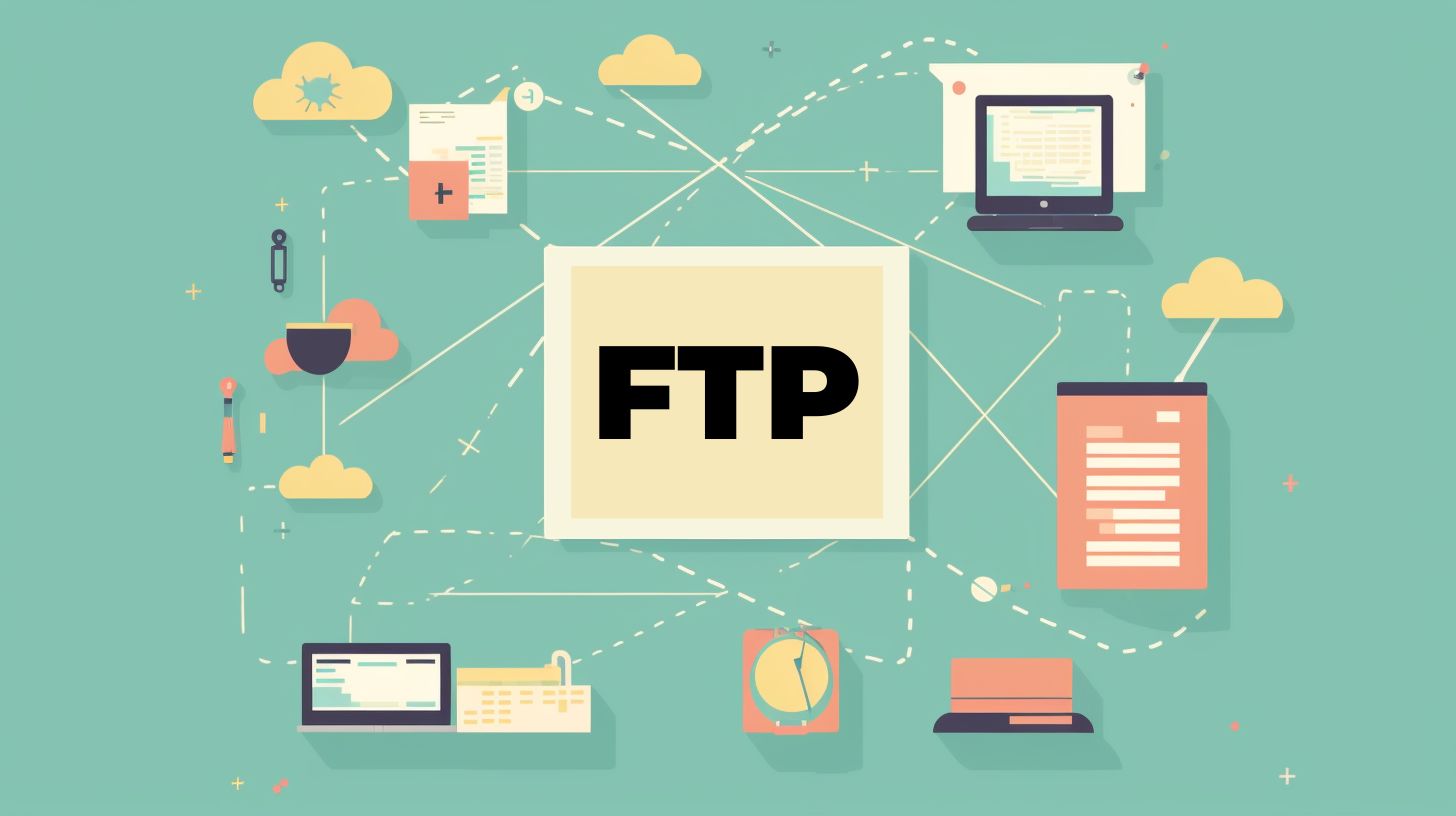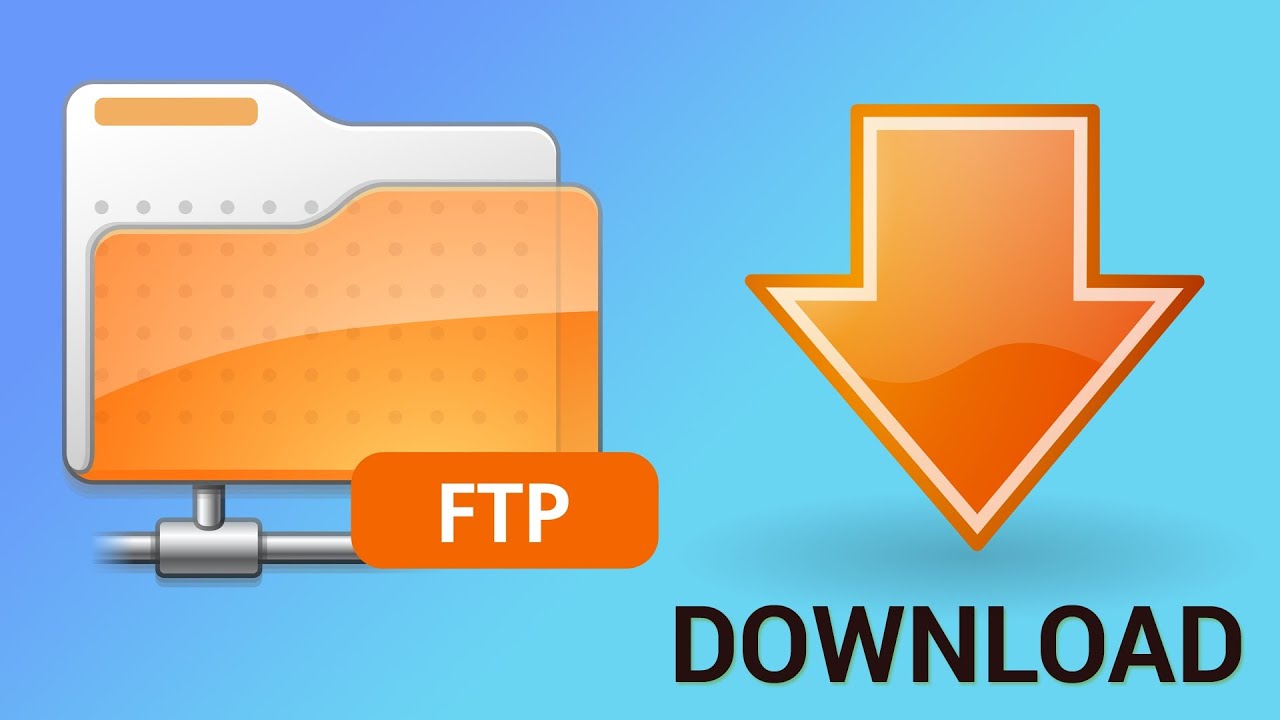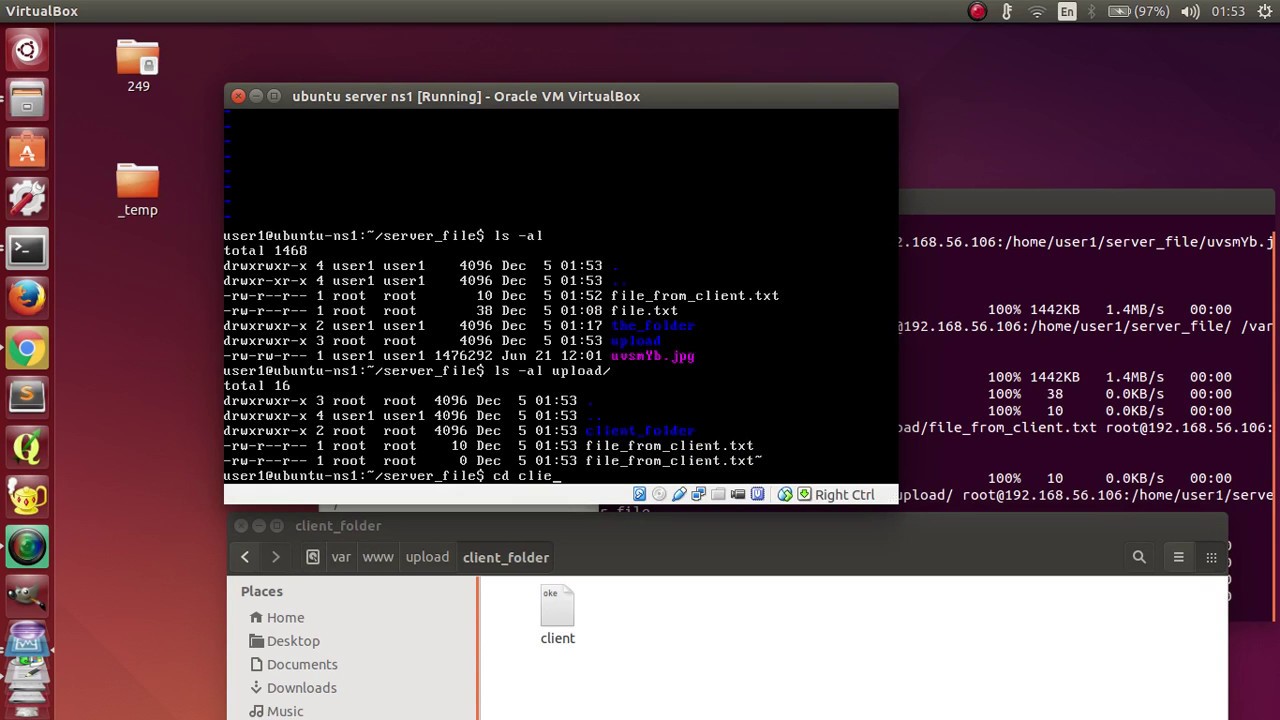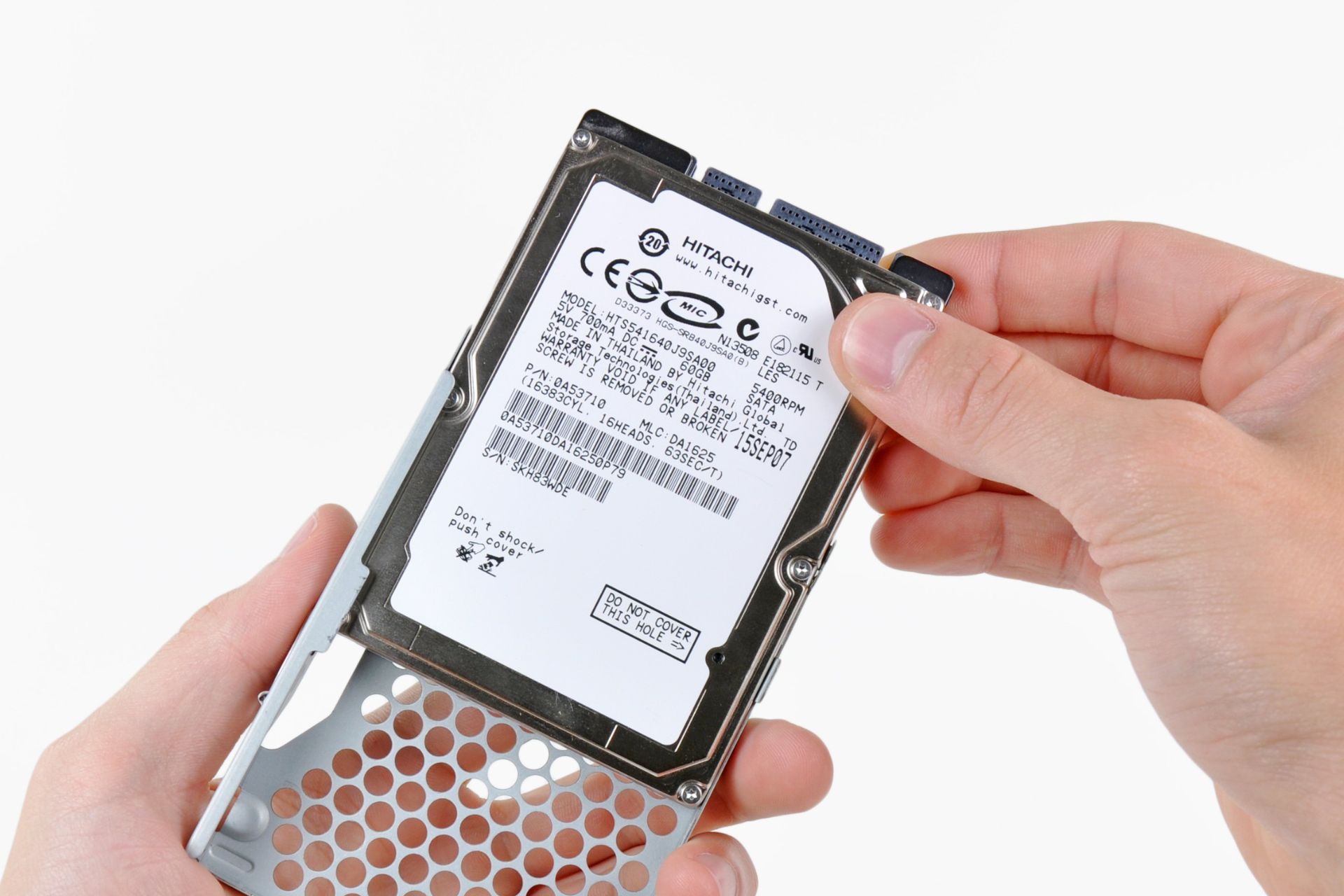Introduction
Welcome to this guide on how to download FTP files. FTP, which stands for File Transfer Protocol, is a standard network protocol that allows for the transfer of files between computers. Whether you are a web developer, an IT professional, or simply someone who needs to download files from an FTP server, this article will provide you with step-by-step instructions on how to accomplish this task.
FTP is widely used for transferring files over the internet, and it offers a reliable and secure way to download files from remote servers. By understanding how FTP works and having the right tools at your disposal, you can easily download files from FTP servers and access the information you need.
In this guide, we will cover the entire process of downloading FTP files, from choosing an FTP client to troubleshooting common issues that may arise. You will learn how to connect to an FTP server, navigate its directory structure, download individual files or entire directories, and verify the integrity of your downloaded files.
Whether you are a beginner or have some experience with FTP, this guide will provide you with the knowledge and skills necessary to confidently download files using FTP. So let’s dive in and learn how to get started with FTP file downloads!
What is FTP?
FTP, which stands for File Transfer Protocol, is a well-established standard network protocol used for the transfer of files between computers. It provides a simple and efficient way to exchange files over a network, whether it be a local network or the internet.
FTP operates on a client-server architecture, where one computer acts as the server that stores and manages the files, and one or more computers act as clients that request and download the files from the server.
The server hosting the files is commonly referred to as an FTP server, while the client software used to access and transfer the files is called an FTP client.
FTP supports both anonymous and authenticated connections. With anonymous FTP, users can connect to the server without providing any login credentials, allowing them to access publicly-available files. Authenticated FTP requires users to provide a username and password to connect to the server, providing more secure access to specific directories and files.
One of the key advantages of FTP is its ability to handle large file transfers and directories containing multiple files. It supports resumable file downloads, allowing users to pause and resume file transfers as needed. Additionally, FTP supports various file transfer modes, including binary and ASCII, to ensure that files are transferred accurately and in their intended format.
Over the years, FTP has become an integral part of various industries, such as web development, software distribution, and data backup. It offers a reliable and efficient method of transferring files, making it a preferred choice for many organizations and individuals.
In the next sections, we will explore how to choose the right FTP client and connect to an FTP server, so you can start downloading files effortlessly.
Choosing an FTP Client
When it comes to downloading files from FTP servers, having the right FTP client is crucial. An FTP client is a software application that allows you to connect to an FTP server, navigate its file structure, and transfer files between the server and your local machine.
There are numerous FTP clients available, both free and paid, each with its own set of features and interfaces. Here are a few factors to consider when choosing an FTP client:
- User-friendly interface: Look for an FTP client with an intuitive and user-friendly interface. This will make it easier for you to navigate the FTP server and perform file transfers without confusion.
- Platform compatibility: Ensure that the FTP client you choose is compatible with your operating system, whether it is Windows, macOS, or Linux. Cross-platform FTP clients are also available, which work on multiple operating systems.
- Security features: Security is paramount when transferring files over the internet. Make sure the FTP client supports secure protocols such as FTPS (FTP over SSL) or SFTP (SSH File Transfer Protocol) to encrypt your file transfers and protect sensitive data.
- File management capabilities: Consider the file management features offered by the FTP client. Look for features such as the ability to rename, delete, and move files, as well as support for resume and pause functionality.
- Advanced features: Depending on your needs, consider advanced features like synchronizing directories, scheduling file transfers, and remote file editing capabilities. These features can greatly enhance your productivity and efficiency.
Some popular FTP clients that you can consider are FileZilla, WinSCP, Cyberduck, and Transmit. These clients offer a combination of ease of use, security, and extensive functionality, making them suitable for both beginners and advanced users.
Take some time to explore different FTP clients and choose the one that meets your specific requirements. Installing and setting up an FTP client will be the first step in your FTP file download journey.
Connecting to an FTP Server
Now that you have chosen an FTP client, the next step is to connect to the FTP server. To establish a connection, you will need the following information:
- Server Address: This is the IP address or domain name of the FTP server you want to connect to. It identifies the server location on the network.
- Port Number: The default port for FTP is 21. However, some servers may use different port numbers for security or customization purposes.
- Authentication Credentials: Depending on the FTP server’s configuration, you may need to provide a username and password to authenticate your connection.
Once you have gathered this information, follow these general steps to connect to an FTP server:
- Launch your chosen FTP client software on your local machine.
- Locate the connection settings or server manager section within the FTP client interface.
- Enter the server address in the appropriate field. If the server is using a non-default port, specify it as well.
- Choose the appropriate connection type. FTP clients typically support three modes: standard FTP (unencrypted), FTPS (FTP over SSL/TLS), and SFTP (SSH File Transfer Protocol). Select the mode that matches the server’s security configuration.
- If required, provide your authentication credentials (username and password) in the designated fields.
- Click on the “Connect” or “Login” button to initiate the connection.
Upon successful connection, the FTP client will establish a communication link with the server, and you will be able to access and interact with the files stored on the server.
Note that some FTP servers allow anonymous logins, where no credentials are required. In such cases, you can simply enter “anonymous” as the username and leave the password field empty.
Each FTP client may have a slightly different interface and workflow, so consult the client’s documentation or online resources for specific instructions on connecting to an FTP server.
Now that you are connected to the FTP server, the next section will guide you through navigating its file structure and finding the files you need to download.
Navigating the FTP Server
Once you have successfully connected to an FTP server using your chosen FTP client, you will need to navigate the file structure of the server to locate the files you want to download. The process of navigating an FTP server is similar to navigating the directories on your local computer.
The FTP server’s file structure is organized in a hierarchical manner, with directories (also referred to as folders) containing files or other directories. Here are the main steps to navigate through an FTP server:
- Viewing the FTP server’s directory structure: Most FTP clients have a file browser interface where you can view the directory structure of the FTP server. The interface typically contains two panes: one for the local file system on your computer and one for the remote file system on the FTP server.
- Navigating to different directories: To navigate to a specific directory on the FTP server, click on the directory name in the remote file system pane. This will take you inside the selected directory, displaying its contents.
- Navigating up to parent directories: To navigate up one level in the directory hierarchy, look for an option like “Up” or “..” in the FTP client interface. Clicking on this option will take you to the parent directory of the current directory.
- Creating new directories: If you need to create a new directory on the FTP server, most FTP clients provide an option to do so. Look for a “New Folder” or “Create Directory” button or menu item in the interface.
When navigating the FTP server, keep in mind that directory names and file names are case-sensitive. Ensure that you enter the names correctly, as discrepancies in capitalization can lead to errors when downloading files.
Furthermore, some FTP servers may have certain directories restricted from access or require specific permissions to view or download files. If you encounter any access restrictions, contact the FTP server administrator for assistance or seek alternative methods to obtain the files you need.
Now that you know how to navigate the FTP server’s file structure, you’re one step closer to downloading files. In the next section, we will delve into the process of downloading files from the FTP server to your local machine.
Downloading Files from the FTP Server
Downloading files from an FTP server is a straightforward process once you have connected to the server and located the desired files. Follow these steps to download files using your FTP client:
- Selecting the files for download: In the FTP client interface, navigate to the directory on the FTP server that contains the files you want to download. You can click on a file or use checkboxes to select multiple files for download. If you want to download an entire directory, select its parent folder.
- Initiating the download: Look for an option in the FTP client interface to initiate the download. It may be labeled as “Download,” “Get,” or something similar. Click on this option to start the file transfer process.
- Specifying the local destination: When prompted, select the destination folder on your local machine where you want to save the downloaded files. Choose a location that is easily accessible and organized for future use.
- Monitor the download progress: The FTP client will display the progress of the file transfer, indicating the current transfer speed and the estimated time remaining. Allow the transfer to complete without interrupting the process.
- Verifying the downloaded files: After the download is complete, it is important to verify the integrity of the downloaded files. Compare the file sizes and, if possible, use checksums or hashes to ensure that the downloaded files are an exact match to the files on the FTP server.
Some advanced FTP clients may offer additional features during the download process, such as setting download priorities, scheduling downloads for a later time, or resuming interrupted transfers. Explore the options provided by your chosen FTP client to take advantage of these features.
Downloading files from an FTP server can take time, depending on the size of the files and the speed of your internet connection. It is recommended to have a stable internet connection and avoid any interruptions during the download process to ensure successful and complete file transfers.
Now that you have mastered the process of downloading files from an FTP server, let’s move on to learning how to transfer multiple files simultaneously, which can save you time and effort.
Verifying the Downloaded Files
Verifying the integrity of the files you download from an FTP server is an essential step to ensure that the files are not corrupted or modified during the transfer process. It is particularly important when dealing with sensitive data or critical files. Here are some methods to verify the downloaded files:
- Compare file sizes: One simple way to check the integrity of a downloaded file is to compare its size with the original file size on the FTP server. If the file sizes match, it is likely that the file was transferred successfully without any issues.
- Checksums or Hash values: Many FTP clients provide functionality to generate checksums or hashes for files. A checksum or hash value is a unique string that is generated based on the content of a file. Before downloading a file, you can generate the checksum or hash value for the file on the FTP server. After downloading the file, generate the checksum or hash value for the downloaded file on your local machine. Compare the two checksums or hash values to ensure they are the same, indicating that the file was downloaded without any modifications.
- File integrity tools: There are various file integrity tools available, such as MD5 or SHA utilities, that can be used to verify the integrity of downloaded files. These tools compare the checksum or hash value of the downloaded file with that of the original file provided by the FTP server.
- Test the functionality of downloaded executable files: If you have downloaded executable files, such as software installers or scripts, it is recommended to run them on your local machine to ensure they function as expected. This will help identify any issues or errors that may have occurred during the download process.
By performing these verification checks, you can have confidence in the integrity of the downloaded files. If any discrepancies are found, it is advisable to re-download the affected files from the FTP server to ensure their validity.
Keep in mind that verifying the downloaded files is an important step, particularly when dealing with critical data or software. Neglecting this step could potentially lead to using corrupted or modified files, resulting in undesirable consequences.
Now that you are familiar with verifying the downloaded files, let’s move on to the topic of transferring multiple files simultaneously, which can improve your efficiency in downloading files from an FTP server.
Transferring Multiple Files Simultaneously
Transferring multiple files from an FTP server can be time-consuming, especially when dealing with a large number of files or directories. However, many FTP clients offer the ability to transfer multiple files simultaneously, making the process more efficient. Here’s how you can transfer multiple files at once:
- Selecting multiple files: In your FTP client interface, navigate to the directory containing the files you want to download. Instead of selecting just one file, you can select multiple files by using a combination of keyboard shortcuts (e.g., Ctrl/Cmd + click) or by selecting a range of files.
- Initiating the simultaneous transfer: Look for an option within your FTP client for simultaneous file transfers or parallel downloads. This option may be referred to as “Multithreaded,” “Accelerated Transfers,” or similar terminology. Enable this feature to allow your FTP client to transfer multiple files at the same time.
- Specifying the local destination: As with downloading individual files, you will be prompted to choose the destination folder on your local machine where the downloaded files will be saved. Ensure that the selected folder has enough storage space to accommodate all the files being downloaded.
- Monitor the transfer progress: The FTP client will manage the simultaneous transfers and display the progress of each individual file transfer. You will be able to track the transfer speed, estimated time remaining, and overall progress of the simultaneous downloads.
- Verifying the downloaded files: After the transfer is complete, it is important to verify the integrity of the downloaded files, as mentioned in the previous section. Perform the necessary checks such as comparing file sizes, using checksums, or running executable files to ensure that all the downloaded files are intact and usable.
By transferring multiple files simultaneously, you can significantly reduce the overall time required to download multiple files from an FTP server. This feature is particularly useful when you have to download a large number of files or when time is a critical factor.
Keep in mind that the performance of simultaneous transfers may vary depending on factors such as the capabilities of your FTP client, the speed of your internet connection, and the limitations of the FTP server. Some servers may have restrictions on the maximum number of simultaneous connections allowed.
Now that you know how to transfer multiple files simultaneously, let’s move on to the next section, where we will discuss common FTP download issues and how to troubleshoot them.
Troubleshooting Common FTP Download Issues
While downloading files from an FTP server, you may encounter certain issues that can hinder or disrupt the download process. Understanding and troubleshooting these common FTP download issues can help you resolve them efficiently. Here are some common issues and their possible solutions:
- Connection Issues: If you are unable to establish a connection to the FTP server, double-check the server address, port number, and your authentication credentials. Ensure that you have a stable internet connection and that your firewall or network settings are not blocking the FTP connection.
- Authentication Failures: If you are unable to log in to the FTP server, verify that you have entered the correct username and password. Check with the server administrator for any account-related issues or possible access restrictions.
- Transfer Failures: If a file transfer fails or gets interrupted, try resuming the transfer if your FTP client supports it. Make sure your internet connection is stable and that your local disk has enough free space to accommodate the file being downloaded.
- Slow Transfer Speeds: If you are experiencing slow download speeds, it could be due to a variety of reasons. Check your internet connection speed to ensure it meets your expectations. Sometimes, the FTP server may have speed limitations, or network congestion may be causing the slowdown. You can try using a different FTP client or ensure that you are not running any other bandwidth-intensive applications simultaneously.
- Corrupted or Incomplete Downloads: If downloaded files are consistently corrupted or incomplete, it could be due to interruptions in the transfer process or issues with the FTP server. Try downloading the files again and make sure to monitor the transfer to ensure it completes without interruptions.
- Incorrect File Permissions: If you are unable to download certain files and receive permission-related errors, it could be due to incorrect file permissions on the FTP server. Contact the server administrator for assistance or try downloading the files from a different location within the server’s directory structure.
If you encounter any other issues while downloading files from an FTP server, consult the documentation or online resources for your FTP client for specific troubleshooting steps. Additionally, the server administrator or technical support team may be able to provide further assistance in resolving any persistent issues.
By troubleshooting common FTP download issues effectively, you can ensure a seamless and reliable file transfer experience. Now that you are familiar with troubleshooting, let’s conclude this guide on how to download FTP files.
Conclusion
Downloading files from FTP servers is a fundamental task for various individuals and professionals. Whether you need to access files for web development, software distribution, or data backup, understanding how to download files using FTP is essential. Throughout this guide, we have covered the key aspects of downloading FTP files, including the definition of FTP, choosing an FTP client, connecting to an FTP server, navigating its directory structure, downloading files, verifying the integrity of the downloaded files, transferring multiple files simultaneously, and troubleshooting common FTP download issues.
By following the steps outlined in this guide, you can confidently download files from FTP servers and ensure the successful transfer of data. Remember to choose an FTP client that suits your needs, establish a secure and reliable connection to the FTP server, navigate its file structure efficiently, and verify the integrity of downloaded files to ensure their integrity.
As with any technology, practice and experience will further enhance your proficiency in FTP file downloads. Stay updated with the latest features and improvements in FTP clients, refer to documentation and online resources for specific instructions, and seek support from the server administrator or technical teams if needed.
Download FTP files effectively, efficiently, and securely, and make the most of this powerful file transfer protocol. Whether you are a novice or an experienced user, mastering the art of downloading FTP files opens up a world of possibilities for collaboration, development, and file sharing.
Now, armed with the knowledge and skills acquired in this guide, you are ready to embark on your FTP file download journey. Happy downloading!

























